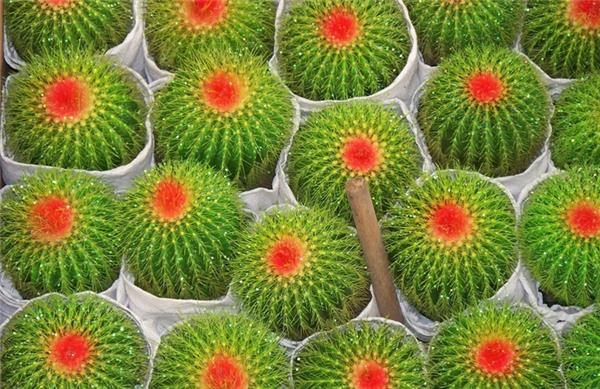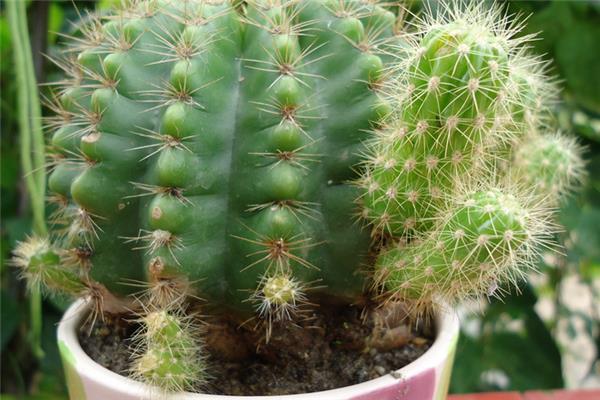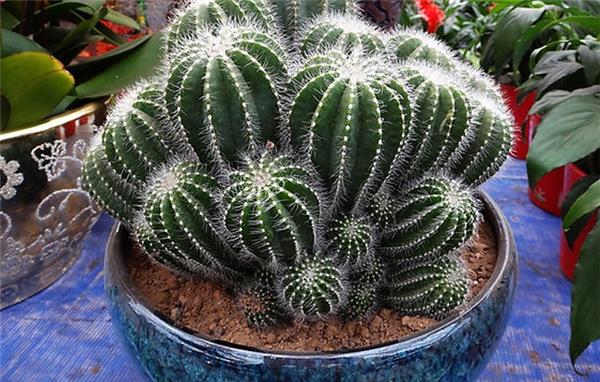What are the kinds of cactus?
Cactus is a dicotyledonous plant, which belongs to the family Cactus in plant taxonomy. There are many kinds, there are more than 40 varieties, spherical, there are stem spherical, oval, longitudinal ribs, radial arrangement; the length and density of bristles are not the same; the colors of flowers are golden yellow, white, red and so on. In spring and summer, large trumpet-shaped flowers come out from the bulbs. Small balls can grow on a sphere. Today, we will briefly introduce some common cactus species:

I. the types of cactus
1. Cactus: also known as grass ball, flower ball. The stem is round, the old stem is barrel-shaped, and the flowers are white and fragrant.
2. Short hair ball: the plant is spherical or tubular, the flower is very large after flowering, and the color of the flower is white.
3. Changsheng ball: the sphere is yellow-green or green, with large flowers, light pink and fragrance.
4. Jin Shengqiu: the sphere is yellowish green, clustered, and the flowers are large and white.
5. Wangsheng ball: the plant is grayish green, spherical or tubular, with large flowers, dark pink or crimson.
6. Golden tiger ball: the stem is spherical, solitary or clustered. The top of the ball is densely covered with golden woolly. The edge is 21MUR 37, remarkable.

Daily nursing of hydroponic cactus
Hydroponic fairy bulb is spherical or oval, green, the sphere has several longitudinal edges, dense acupuncture on the edges, yellowish green, different length, for radiation. There are many small balls on the side of the sphere, which are graceful and elegant. Collocation: transparent glass bottle hydroponic cactus is called "lazy flower" for its convenience and convenience, so its daily care is very convenient, just pay attention to the following points:
1. The suitable environmental temperature: the growth temperature of hydroponic plants is 5 ℃-30 ℃, and they can grow normally in this range.
2. Suitable illumination: the light of hydroponic plants is mainly scattered light, and it is not necessary to be exposed to the sun. Try to avoid direct sunlight in summer.
3. Change water and clean flower roots: hydroponic plants change water once in 7 days in summer and 15 days in winter, and several drops of special nutrient solution for flowers can be added (the concentration of nutrient solution can be prepared according to the instructions). The utensils used to cultivate hydroponic plants are easy to grow moss, affect the ornamental of the roots, and consume oxygen in the water. When changing water, you should first wash away the mucus from the flower roots with clean water, and cut off the old and rotten roots. And wash the moss on the utensils and roots. For each change of water, the interface of the water is suitable for the submerged root system, and the rest of the root segment is allowed to be exposed to the air.
4. moisturizing and spraying foliar fertilizer: in order to prevent the occurrence of leaf dryness, foliar moisturizing should be sprayed with clear water during daily nursing, preferably once a week, which can not only provide nutrition for leaves and increase foliar luster, but also can resist low temperature in winter.

Is the cactus protected from radiation?
In the field of flower horticulture, cactus is used to call the spherical variety of cactus plants as cactus; cactus is a kind of stem, leaf and flower with high ornamental value. the traditional cactus is planted in the desert and the hydroponic cactus cultivated by plant aquatic mutagenesis technology, you can not only see its white and tender roots, but also see the lovely little fish swimming among the roots, which is really pleasing to the eye. It is a fine art of hydroponic flowers.
In fact, what the sun emits is light radiation, not radio radiation emitted by computers. Cactus evolved into spiny leaves only to avoid being burned by the sun, which can not be used as a basis for radiation protection. And the radiation travels along a straight line, which can only be resisted but not absorbed. So even if cactus plants are resistant to radiation, small plants do not act as a mask, let alone help protect humans from radiation. Experts tell us that the so-called plant radiation protection has no scientific basis. Maybe the negative oxygen ions released by plants can offset some of the effects of radiation on human metabolism, but it is just a commercial gimmick to say that it can protect against radiation. However, these cute little potted plants on the desk can still be in a pleasant mood.

After reading this article, I believe everyone has a certain understanding of the variety and breeding of cactus. The above is about the cactus varieties, cactus culture, the role of the relevant introduction, I hope to be helpful to everyone.
Related
- Wuhan Hospital Iron Tree Blooming Result Was Instantly Frightened by the Gardener Master
- Which variety of camellia is the most fragrant and best? Which one do you like best?
- What is the small blue coat, the breeding methods and matters needing attention of the succulent plant
- Dormancy time and maintenance management of succulent plants during dormancy
- Minas succulent how to raise, Minas succulent plant pictures
- What are the varieties of winter succulent plants
- How to raise succulent plants in twelve rolls? let's take a look at some experience of breeding twelve rolls.
- Attention should be paid to water control for succulent plants during dormant period (winter and summer)
- Watering experience of twelve rolls of succulent plants
- Techniques for fertilizing succulent plants. An article will let you know how to fertilize succulent plants.



